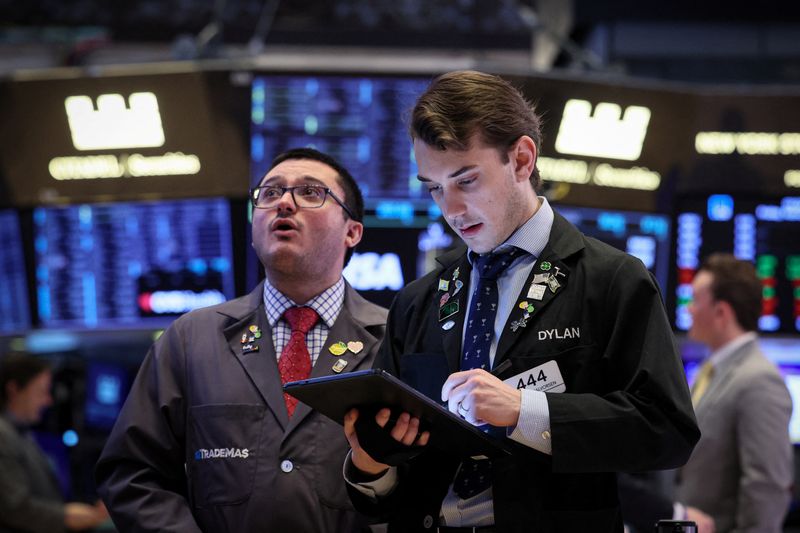The S&P 500 index has dropped by 6% over the past three days amid investor concerns about the durability of US economic growth. During this period, stock market volatility, as measured by the VIX index, spiked from 16 to 39, reaching its highest level since October 2020.
In a Monday note to clients, Goldman Sachs (NYSE:GS) strategists offered seven takeaways from the recent sell-off and surge in volatility:
1. Their S&P 500 index target for year-end 2024 remains 5600 (+8%). This forecast assumes the US economy continues to expand, with earnings rising by 8% in 2024 and 6% in 2025, and the index trading at a P/E multiple of 20x, roughly in line with the current multiple.
“While the drawdown has been sharp, it has barely reached the magnitude of the market decline in a typical year,” strategists said in the note.
2. Historical data shows that investors typically profit when buying the S&P 500 index following a 5% sell-off. Since 1980, an investor buying the S&P 500 index 5% below its recent high would have generated a median return of 6% over the subsequent three months, enjoying a positive return in 84% of episodes. Corrections of 10% have also been attractive buying opportunities more often than not, but with weaker rates of outperformance than following 5% drawdowns.
3. While cyclical stocks have underperformed, the US equity market does not appear to be pricing in a recession.
"Following the sharp recent move, the Cyclicals vs. Defensives pair now appears to reflect the roughly 2-3% real pace of GDP growth indicated by the 2Q GDP print and our economists’ 3Q GDP tracker,” Goldman noted.
“Our economists forecast US real GDP growth will average 2.7% in 2024 and 2.3% in 2025."
4. Defensive sectors, including Utilities, Communication Services, and Consumer Staples, historically perform best as the Fed begins an interest rate-cutting cycle.
Following the release of the weak July employment report, the market now expects the Fed will aggressively cut the funds rate during the remainder of 2024.
"Within the equity market, the start of Fed rate cutting cycles are typically characterized by defensive sector outperformance, similar to the rotation that has occurred during the past week."
5. Goldman Sachs highlighted its “basket of Stable Growth” stocks represents an attractive investment strategy for those concerned about a further deceleration in the US economy. This sector-neutral basket consists of the 50 Russell 1000 stocks with the most stable EBITDA growth over the past 10 years.
6. Although mega-cap tech stocks have dropped sharply, their valuations still reflect AI optimism despite concerns about the timing and magnitude of returns on their capital investments.
"Despite the decline, current valuations for the group remain above the 10-year median of 24x, the 2022 average (26x), and the 2019 average (24x)."
7. The economic sensitivity of the Russell 2000 will outweigh the impact of interest rate relief in the coming months, strategists noted.
About one-third of Russell 2000 companies are unprofitable, and roughly 30% of their debt is floating rate.
From this perspective, declining interest rates should relieve pressure on small-cap balance sheets and lower their cost of capital, strategists added. However, the majority of the recent decline in interest rates has been driven by weakening economic growth expectations, which has weighed on cyclical stocks, including small-caps.
"The correlation between the Russell 2000 and the nominal 10-year US Treasury yield is back in positive territory, reflecting that once again 'good news is good news,' similar to the pre-COVID regime."
